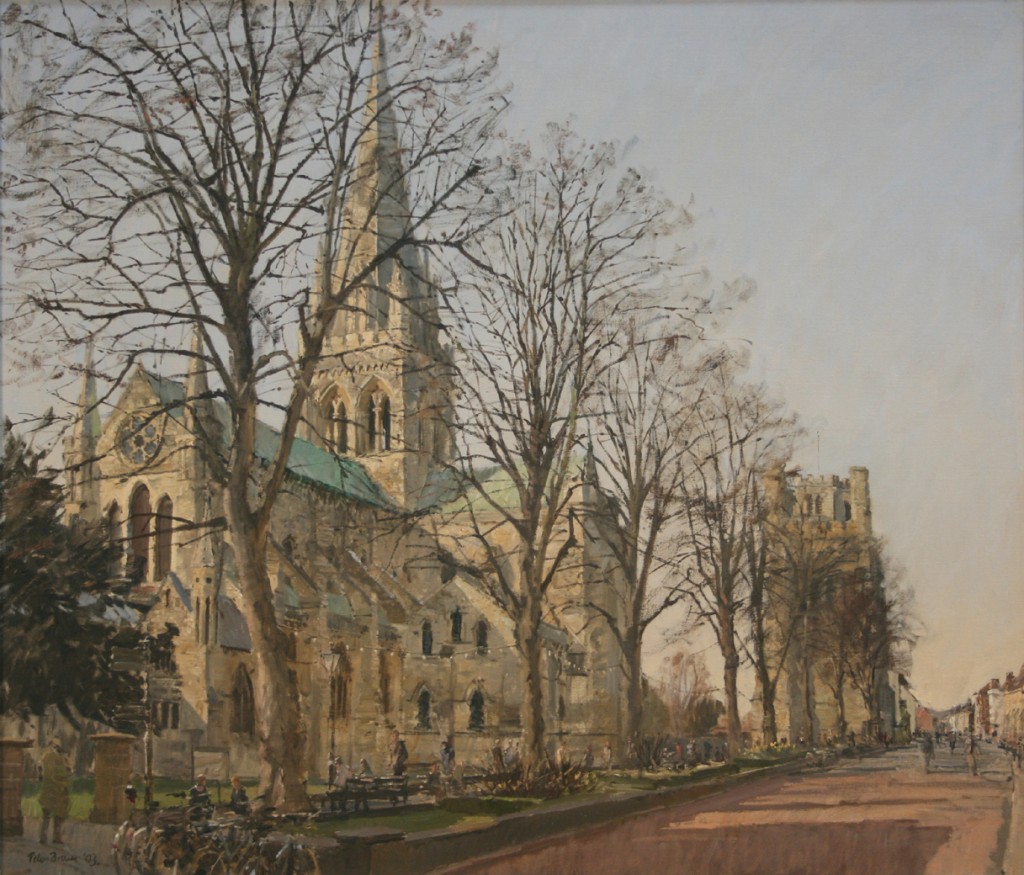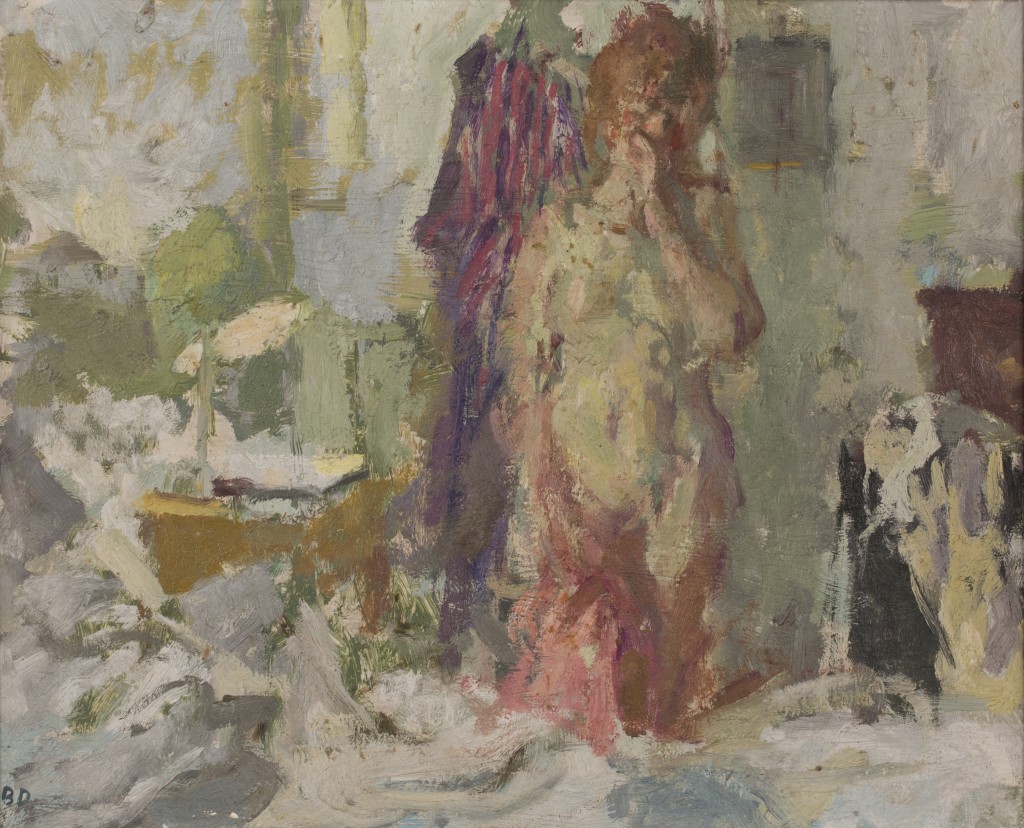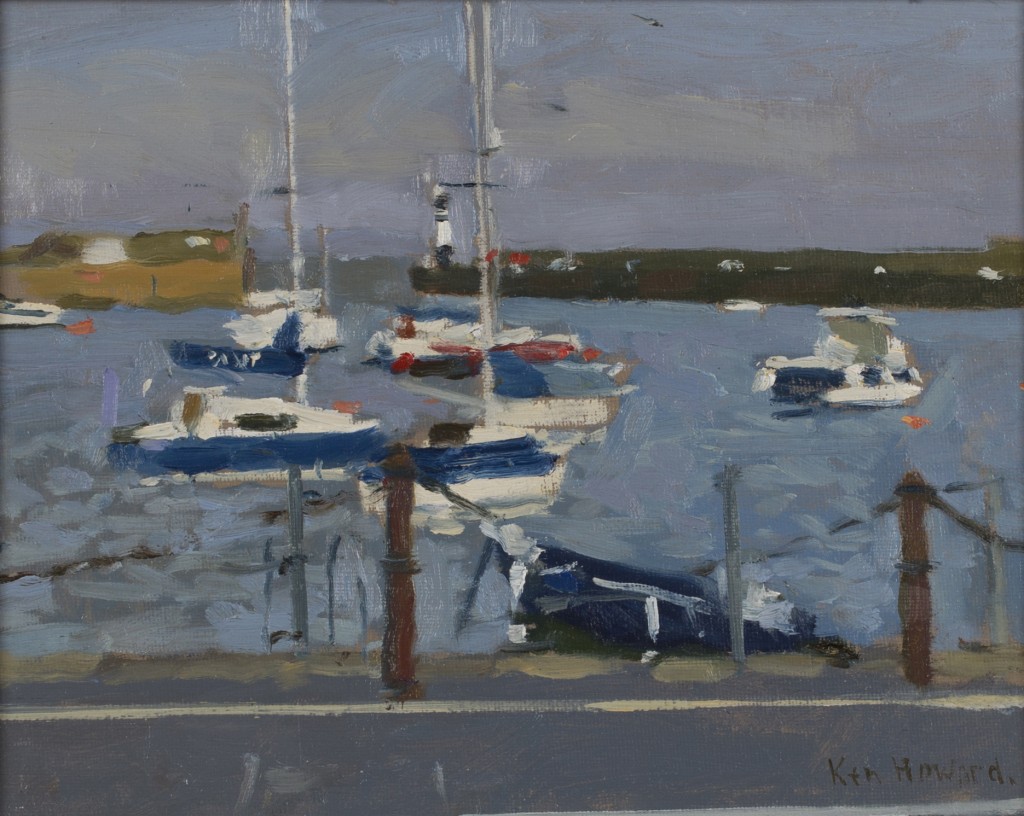
Contemporary British Realist painters are leading a renaissance in figurative and landscape art. Many of them are members of the New English Art Club.
The New English Art Club was founded in 1886 as an exhibiting society for artists influenced by French Impressionism, whose work was rejected by the then conservative Royal Academy. Artists included James Abbott McNeill Whistler, Walter Sickert, John Singer Sargent and Philip Wilson Steer.
Today members of the New English Art Club continue to paint in a realistic, figurative style.
Amongst the youngest of these is Peter Brown (b. 1967) who was elected to membership in 1998. He paints street scenes and city landscapes directly from his subjects, like the winter view of Chichester Cathedral in West Sussex. He works ‘en plein air’ in all weathers drawing inspiration and energy from his engagement with passers-by.

Bernard Dunstan (b.1920) was elected to the New English Art Club in 1946. He studied firstly at the Byham Shaw School of Art and then at the Slade School of Fine Art between 1939 and 1941. He is best known for his studies of figures in interiors, especially nudes, which he paints in the Anglo-French tradition of the late 19th and early 20th centuries. The Slade’s emphasis on swift, decisive lines drawn from the model can be discerned in the freedom and movement of light in Dunstan’s oil, ‘Going to Bed’.

The artist Ken Howard (b. 1932) is often quoted as saying “For me painting is about three things…revelation, communication and celebration.” He studied at the Hornsey School of Art and was elected as a member of the New English Art Club in 1962, serving as President between 1998 and 2003. His work combines keen observation with fine draughtsmanship and tonal precision. Light is the overarching inspiration in his paintings as can be seen in the oil ‘Newlyn High Water’. His subjects include Venice, London, Cornwall and Studio nudes.
Like all these artists, Ken Howard allows us to glimpse something beyond our immediate perception by using the particular vocabulary of his painting and style to communicate his vision of the world around him. In this he uplifts us, celebrating human dignity and a sense of wonder in nature.
For me there is a subtle irony in the apparent role reversal whereby today the Royal Academy embraces the abstract and contemporary whilst the New English Art Club is overseeing a renaissance in contemporary realism and draughtsmanship amongst this spirited and talented group of artists.
Prices for these artists range from the low thousands into the tens of thousands of pounds at auction, which clearly affirms collectors’ delight in Contemporary British Realist art.
By Rupert Toovey, a senior director of Toovey’s, the leading fine art auction house in West Sussex, based on the A24 at Washington. Originally published in the West Sussex Gazette.